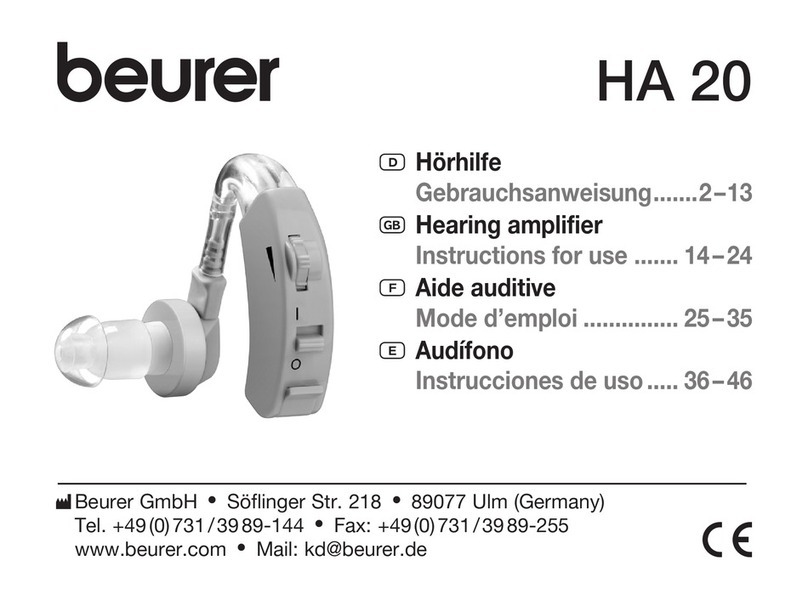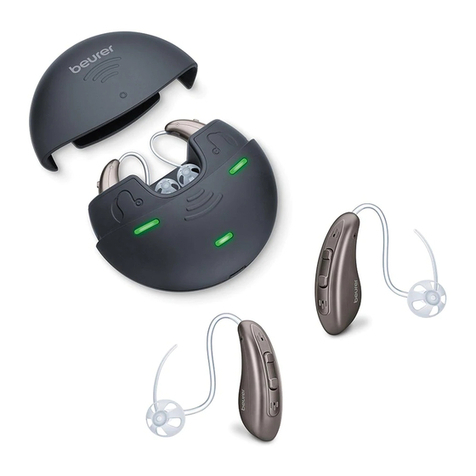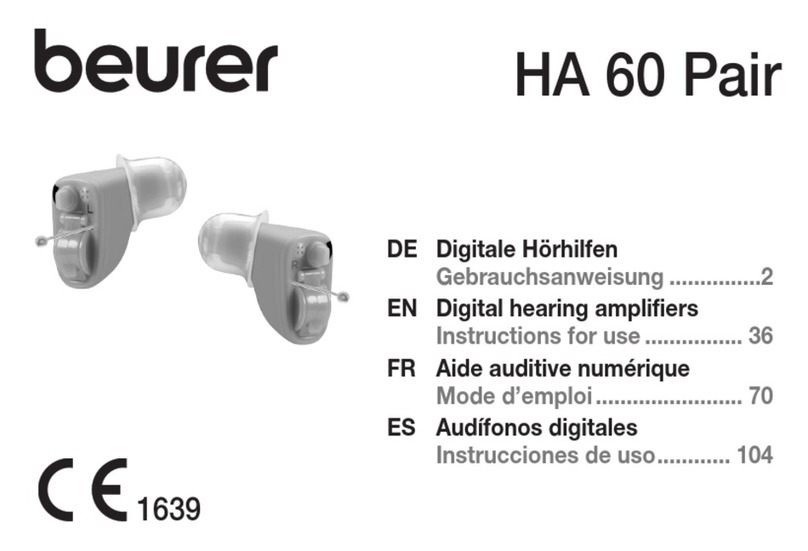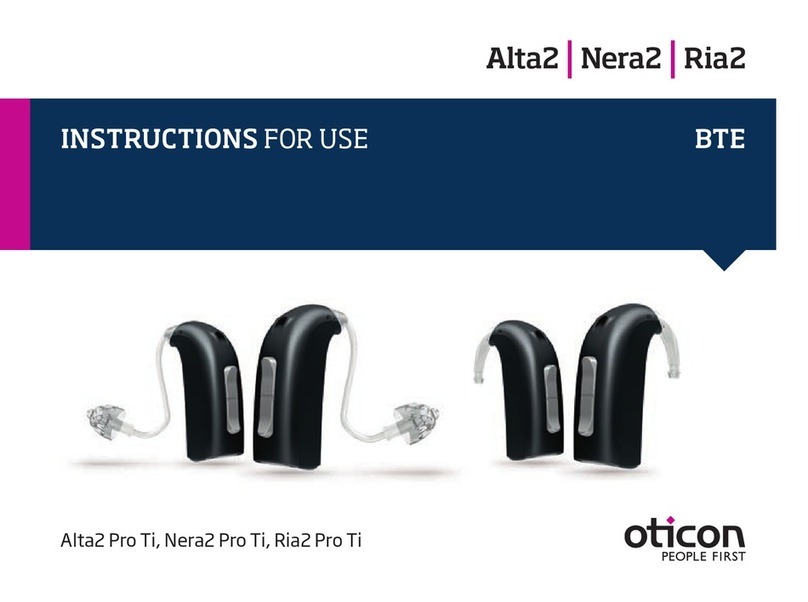
7
•
If you feel unwell or experience pain when wearing the hearing amplifier,
stop using it immediately and contact your doctor.
•
If your ear becomes inflamed or your skin irritated or you experience an in-
creased accumulation of ear wax when wearing the hearing amplifier, stop
using it immediately and contact your doctor.
•
Stop using the hearing amplifier and seek medical attention if the following
occurs:
-
Rash or eczema on areas of skin that come into contact with the hearing
amplifier. (The parts of the hearing amplifier that come into contact with ar-
eas of skin are made from a material that is kind to the skin. In rare cases,
however, allergic reactions may occur that appear in the form of eczema.)
- Use of the hearing amplifier results in discharge from the ear and/or ne-
cessitates ear treatment.
- Sudden, significant decrease in hearing ability.
•
At first, set the volume to a low setting and increase it gradually once you
have become accustomed to the hearing amplifier.
•
Do NOT set the volume control too high, as this may cause further damage
to hearing over an extended period of time. This is particularly important to
note, as the device achieves a high output power.







































